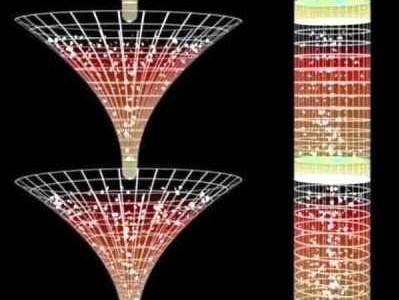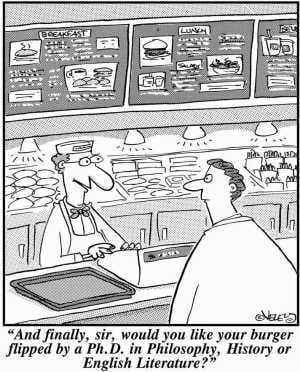The A Priori Fallacy of Kant
Table of Contents
Metaphysics, as a subset of philosophy, was corrupted into Epistemology because of Kant through his a priori fallacy.
- This fallacy is a non-problem that was solved by the useless tool called Epistemology.
This is similar to how Aristotle corrupted logic into Ontology through the invention of syllogism.
When Metaphysics and Physics became subservient to theology [via Ontology], the duties of human life were treated as subservient to the afterlife. In this way, Metaphysics became the most corrupted science.
Adam Smith
Wealth of Nations, Book 5
Both Ontology and Epistemology deal with the formation of knowledge. But this was already addressed by 3 sciences:
- Metaphysics (Pneumatics)
- Physics
- Logic
Physics + Logicdealt with the visible world.Metaphysics + Logicdealt with the invisible world.
Physics was gradually extended and divided into Physics and Metaphysics or Pneumatics.
Adam Smith
Wealth of Nations, Book 5
Pneumatics is the study of the invisible aerial pneuma which is the same as chi in Taoism and Vayu in Yoga.
Kant Corrupts the Science of Knowledge
Like the 18th century philosophers, Kant divides all knowledge as experiential (a posteriori), and non-experiential (a priori).
Traditionally:
- a priori means ‘before experience’
- Omniscience, prediction, prophecy, and intuition all fall under this, because you know something in advance before it actually happens
- This is the effect of the higher mind or Mahat in Hinduism
- This is what Ontolgy is supposed to deal with
- a posteriori means ‘after experience’
- This is how we normally know things – by experiencing them, either directly (as in seeing things) or indirectly (as in education or someone else telling you what they saw or know)
- This is the effect of the lower mind or Aham in Hinduism. Both Mahat and Aham form citta or mind-stuff. In other words,
mind = lower mind + higher mind - This is what Epistemology is supposed to deal with
However, Kant corrupts the word a priori by defining it as perceptions that are confined to the mind and a posteriori as outside the mind.
Our empirical knowledge is a compound of that which we receive through impressions, and that which the mind supplies from itself.. Knowledge independent of experience and sensuous impressions is called a priori, in contradistinction to empirical knowledge, which has its sources a posteriori, that is, in experience.
Kant
Introduction, Critique of Pure Reason
To Kant:
- the within-the-mind mental activities manifest as intutional or passive-thinking
- the outside-the-mind mental activities manifest as active-thinking
- This connects impressions with each other, even with those ideas that are within the mind.
All judgements with a subject and predicate is done in 2 ways. Either the predicate B belongs to subject A or the predicate B lies completely out of the conception A although still connected. In the first instance, I term the judgement analytical, in the second, synthetical.
Analytical judgements have the connection of the predicate with the subject cogitated through identity.
Those in which this connection is cogitated without identity are called synthetical judgements. The former may be called explicative, the latter augmentative judgements.
Kant
Introduction, Critique of Pure Reason
So we can simplify Kant’s words as follows:
| Kant | Layman |
|---|---|
| A priori | Within-the-mind or Confined-to-mind |
| A posteriori | Outside-the-mind |
| Analytical judgement | Passive-Thinking (autopilot) |
| Synthetical judgement | Active-Connective-Thinking (manual effort) |
This simplifies the statement:
Geometry is a science which determines the properties of space synthetically, and yet à priori.
into:
Geometry determines the properties of space through active-thinking, yet confined-to-the-mind.
Much easier, huh?
Kant then combines these concepts to create the metaphysical question:
How are synthetical judgements a priori possible?
Kant
Introduction, Critique of Pure Reason
In other words, Kant asks: How does the mind think?
But this question has been fully solved and answered by the pre-Aristotle Greek sciences and by the Asian sciences:
| Greek Science or Mechanism | Asian Science or Mechanism |
|---|---|
| Metaphysics | Mahat or higher mind |
| Logic | Aham or lower mind |
| Physics | Citta or mind-stuff |
Both the ancient Greeks and Asians have already realized that the world was not real.
And so their goal was to stop the thinking process by uniting their minds with the Supreme Mind who was already omniscient and didn’t need to think.
Kant’s Corruption of How the Mind Thinks: Mathematics
The big problem was that both Aristotle and Kant were intellectuals. It is the nature of intellectuals to keep on thinking.
So instead of realizing the existence of a Supreme Mind that can end the thiking process, both Kant and Aristotle enshrine logic as the top science:
| Correct Science or Mechanism | Aristotle | Kant |
|---|---|---|
| Metaphysics | none | none |
| Logic | Ontology (via syllogisms) | Transendence or Pure Reason (via Mathematics) |
| Physics | Physics | Physics |
To enshrine “transcendent logic” Kant:
- Blocks out the sensory world
- Imposes his own arbitrary abstractions, formalizing them as principles
This style is similar to Aristotle blockng out Plato’s theory of metaphysical ideas to enshrine a theologistic God-substance.
You are Your Own Math-God
Abstractions work because each person is the god of his own mental universe.
- Aristotle used logic + thoughts
- Kant used logic + numbers (as math) i.e. Mathematics is relational logic using numbers
Everyone is free to connect numbers in their own minds as equations, just as everyone is free to ramble with thoughts and connect them to each other.
But whether these abstract number and thoughts work in reality is a sign of how a mind is attuned to reality.
Pure reason succeeds in the sphere of mathematics. It leads to the expectation that the mathematical method can be applied to other regions of mental endeavour. In this way, it can make itself a master over nature.
Kant
Before Kant’s time, the experts in causality were priests. Thanks to Kant, the false experts are now mathematicians.
This is proven by the priest-physicist Lemaitre who pegged the cause of the universe to a Big Bang, made acceptable because it matches the math of the day.

Kant’s Corruption of How the Mind Thinks: Epistemology
Kant’s separation of reality from the thinking process mixes up the following metaphysical objects and structures:
- knowledge
- facts-from-memory
- opinions
- beliefs
All of these are a priori or within-the-mind:
- knowledge and facts are demonstrative and real
- opinions and beliefs may or may not be real
To solve this non-problem, academics had to create “Epistemology” which is supposed to re-separate fact from opinion.
- This then adds unnecessary effort when the whole problem could have been avoided by not mixing up fact and opinion in the first place.
The mix-up could be prevented by simply classifying which metaphysical object was sensory and which was not.
- To further strengthen this classification process, the ancient Greek invented the tool of dialectics.
Let’s say you get an idea to increase sales in your company. You are not sure whether it is correct or not.
- A common-sense person would ask his colleague immediately whether his idea would work. The colleague would then answer ‘yes’ or ’no’ as a fact
- ‘Yes’ means the idea had a match with reality
- ‘No’ means it had no match
- But a Kantian would keep on developing that sales-idea in his own mind into a million-dollar campaign with huge sales projections even if it had zero reality (because the goal is the thinking process and not any real effects)
The failed sales-idea would then prompt you to find out why your idea failed. It might lead you to ask: “How does the mind think?”
- This would lead to the false science of Epistemology.
- Academics and intellectuals would then create courses on useless epistemology to give employment to themselves and to appease people who didn’t have the common sense to ask the world to verify their ideas.*
Superphysics Note

This same problem afflicts modern Physics which created useless theories like Supersymmetry, Loop Quantum Gravity, and String Theory.
Mathematics and physics are the two theoretical sciences which have to determine their objects a priori. The former is purely a priori, the latter is partially so
Kant
Preface